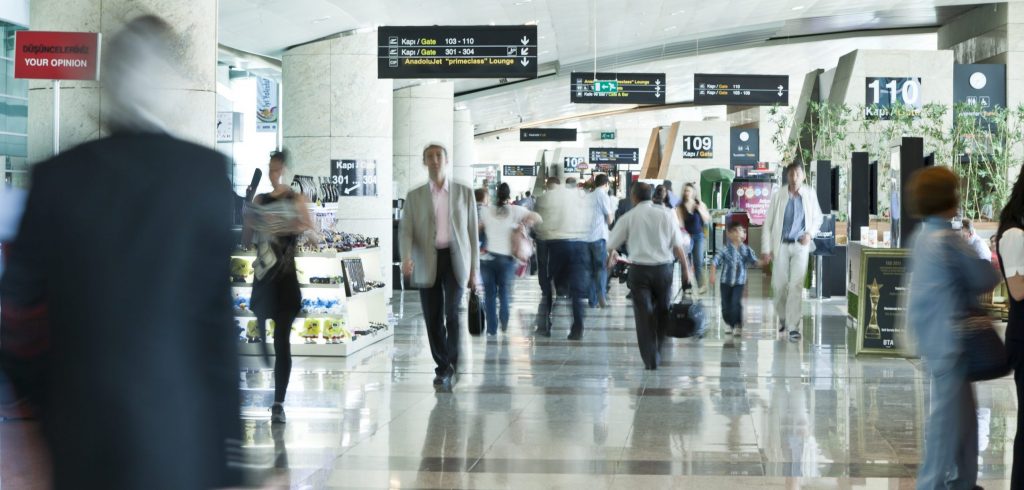Coordination and innovation are the key to ensuring the resilient restart of sustainable airport operations in a post-Covid world. For 100 years, airports have served as engines of economic development for their surrounding regions. Socioeconomic development, connectivity, land use planning and governance are the key parameters that are directly or indirectly affected by the development of airports.
With the advent of new technologies and new ways to travel, strategically located airports are potential gateways not just for national and international connections, but also for connections across transportation mediums, including land, air and water. This paves the way for airports to become next-generation mobility hubs.
Sustainability and transformation
Not only is airport operation and development of prime concern in environmental sustainability discourse, but it holds equal importance as a driver of transformation. A transformation toward smart, resilient and attractive communities that benefit from the impact of sustainable airport area development on employment and education. Therefore, the resilient post-Covid-19 restart of airports and the aviation industry at large becomes of the utmost importance.
Transportation is the driving force for economic activities, enabling access to jobs, education and health, as well as the production of goods and services. Prior to the start of 2020, global issues such as demographic shift, rising energy demands, economic expansion, hyperconnectivity, ecological overshoot, mega urbanization, multipolar globalization, artificial intelligence and climate change were the megatrends affecting transportation. With the advent of new technologies, new avenues of employment are being created, and the nature of existing jobs will need to be adapted thanks to new competencies.
Covid-19 recovery
The Covid-19 crisis has literally brought the aviation industry to a standstill. Airports suspended major parts of their operations in the second and third quarter of 2020, although they also secured vital cargo airlifts for communities and now for the procurement of life-saving vaccines.
Aviation and tourism have taken significant hits due to the pandemic. Not just from the industry’s perspective but also from a consumer point of view. The lesson that we should take from the current crisis to ensure future success is the ability to adapt and bounce back. Accepting this challenge as an opportunity to reconfigure will define our course in the coming years, decades or even centuries.
The International Air Transport Association’s (IATA) plan for reconnecting the world relies on four pillars: strict bio-safety protocols, systematic testing, a secure digital health passport and financial restraints. If we analyze these alongside the emerging sustainable transportation demand in territories for a CASEPI (connected, automated, shared, electrified, personalized, and individualized) system, the clear correlation for coordination between industries emerges.
Airports can play their part in the post-Covid-19 restart through trans-sectoral coordination across physical and digital infrastructure. This will also be the cornerstone to deal with future challenges of mobility, environment, health and education, among others.
 The great bounce-back
The great bounce-back
Some airports are salvaging their businesses through short-term solutions such as offering special services to customers to keep them engaged. Some are looking at alternate ways to generate revenues like opening their doors as drive-through cinemas. But a stronger, coordinated and sustained approach to recovery is required. China, for example, is already experimenting with a mutually recognized health code mechanism involving QR codes that will indicate if a person has been infected with the virus, is still infected or has never been infected. In Singapore and Australia, QR codes are used for contract tracing. The possibilities of a system like this can be endless.
Once vaccinations are more broadly administered, a similar system for digital vaccine passports will help streamline travel. Digital coordination is also essential for the distribution of the vaccine, where the freight management capacities of airports and their place in the supply chain is put to the test.
Airports need to innovate or risk irrelevance. Automated sanitation at airports, and digitized and seamlessly coordinated airport access for safe and secure travel will become the norm for peaceful travel. For instance, the tourism sector can divide operation areas between trains and airlines. All journeys of less than two hours’ duration are to be done by train, making it imperative for national carriers to focus on their long-haul flights. Airlines with short- and medium-haul fleets could potentially play a part in the future of urban air mobility taxi drones.
Opening up the airspace to include new layers for the operation of urban air mobility and connecting the new modes of transportation – including Hyperloop – to the existing transportation network through airports will also be top priority in making airports next-generation mobility hubs. Electric aviation, sustainable aviation fuel and hydrogen hold the key to address the sustainable aviation energy challenge. These levers and parameters will be the driving opportunities for restarting airports post-Covid-19.

